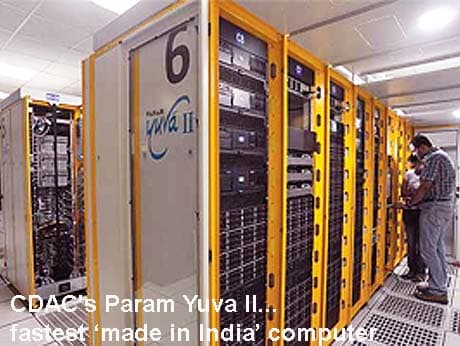India To Soon Get A Home Made Supercomputer
Many of us may recall our introductory computing classes in school where we were first introduced to the Indian Super Computer, PARAM. With Russian collaboration it was a big hit, relying on which, the Indian scientific community developed. Now, another interesting speculation has again hit the market, prompting that India might have its own, indigenous super computer by the next year i.e. 2017.
Our honourable PM's vision of "Make in India" has taken good shape as different sectors of science and technology are now projecting India as their incubation hub. Initiated at the time of the previous govt, as reported, the new supercomputer is an endeavour by the Indian Govt. as a part of a five-year long project costing Rs 4500 Crore, aimed to proliferate the momentum of research and applications.

A bill was passed this March in order to initialise the project of National Supercomputing Mission to raise 80 supercomputers, imported and indigenously built, so that the computing experience goes beyond the limit and blends to perfectly analyse certain aspects with its high computing power. Some of them will be placed across the scientific institutes in India.
The project was undertaken with collaborative association from the Indian Institute of Science (IISc) Banagalore and the Centre for Development of Advanced Computing (C-DAC). It is known now, that the project target is to build an exascale computing system having processing speed in the exaflop range. This would imply that the unimaginable capacity of billions of calculations per second, would be performed by such a computer.
Ashutosh Sharma, secretary in the ministry of Science and Technology implied that the major challenge for these devices was to maintain them at a comparatively lower cost rate. The process requirement of these computers are superb and only consumes power at the expense of the Rs 1000 crore cost itself. The first one i.e. the indigenous offsprings of the earlier devices is expected to run accordingly and help in climate monitoring, creating weather reports, drug discovery and much more.
Source: #-Link-Snipped-#
Our honourable PM's vision of "Make in India" has taken good shape as different sectors of science and technology are now projecting India as their incubation hub. Initiated at the time of the previous govt, as reported, the new supercomputer is an endeavour by the Indian Govt. as a part of a five-year long project costing Rs 4500 Crore, aimed to proliferate the momentum of research and applications.

A bill was passed this March in order to initialise the project of National Supercomputing Mission to raise 80 supercomputers, imported and indigenously built, so that the computing experience goes beyond the limit and blends to perfectly analyse certain aspects with its high computing power. Some of them will be placed across the scientific institutes in India.
The project was undertaken with collaborative association from the Indian Institute of Science (IISc) Banagalore and the Centre for Development of Advanced Computing (C-DAC). It is known now, that the project target is to build an exascale computing system having processing speed in the exaflop range. This would imply that the unimaginable capacity of billions of calculations per second, would be performed by such a computer.
Ashutosh Sharma, secretary in the ministry of Science and Technology implied that the major challenge for these devices was to maintain them at a comparatively lower cost rate. The process requirement of these computers are superb and only consumes power at the expense of the Rs 1000 crore cost itself. The first one i.e. the indigenous offsprings of the earlier devices is expected to run accordingly and help in climate monitoring, creating weather reports, drug discovery and much more.
Source: #-Link-Snipped-#
0
